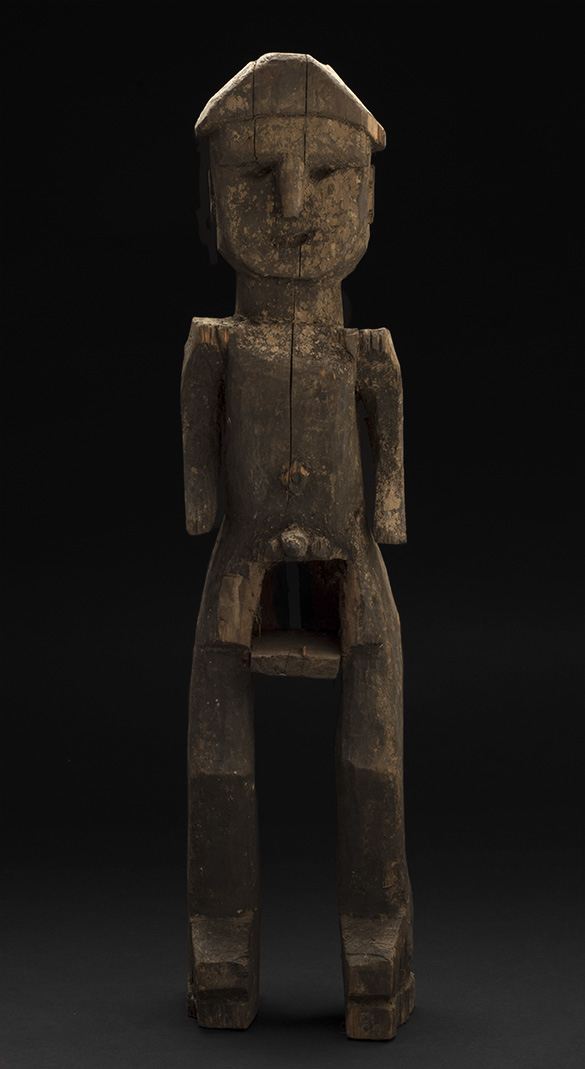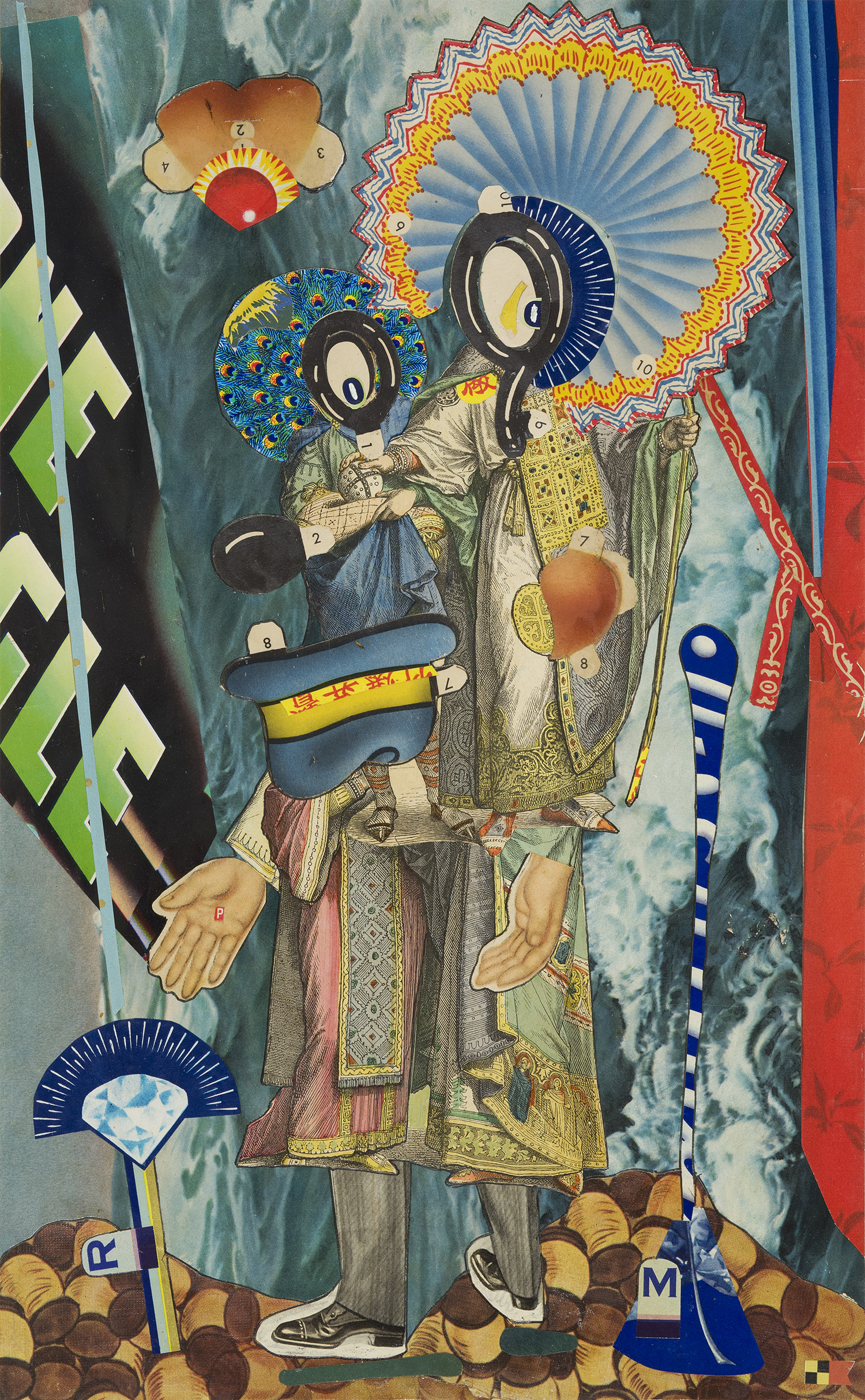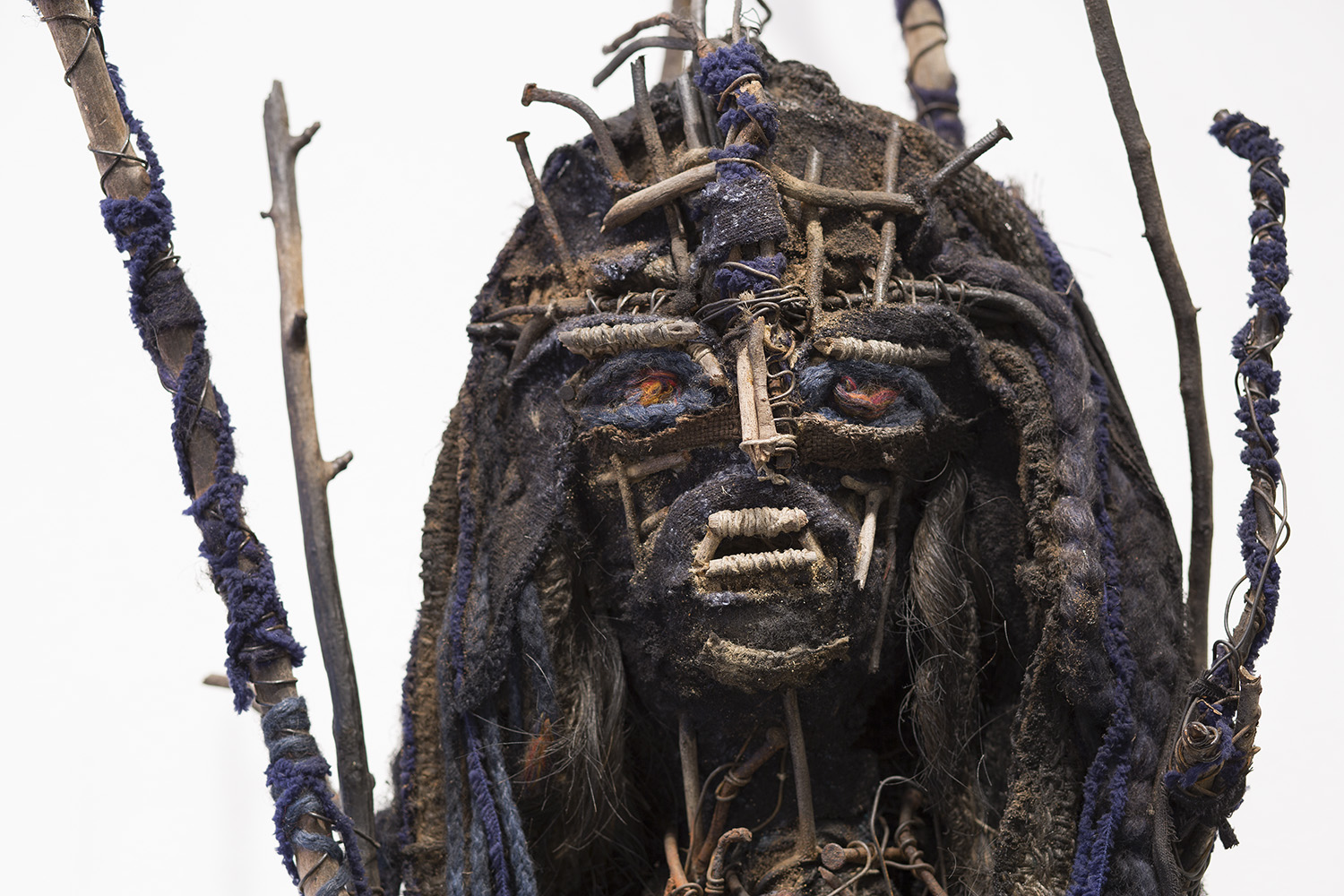Capture the Flag
Check out this great article by John Foster about Asafo Flags!
Africa
Asafo Flag - Fante People - Ghana, Pre 1957
Cotton fabric with felt
38 x 49.5 inches
96.5 x 125.7 cm
AF 365
Faceshifting II Catalog now available on ISSUU
CEREMONIES: AKIHIRO NIKAIDO & YUKO KIMURA
Yuko Kimura, Little Wave III, Monotype on kozo (mulberry) handmade paper, kozo bark fiber, thread, collage, 13 x 40 inches, 33 x 101.6 cm, YuK 38
CEREMONIES: AKIHIRO NIKAIDO & YUKO KIMURA
(May 19 – June 18, 2016)
Cavin-Morris Gallery is pleased and privileged to present the artwork of Akihiro Nikaido and Margaret Yuko Kimura. Both artists display a concept known in Japan as Yugen; the ability to suggest, rather than bluntly display. This is an essential aesthetic of delicacy and at the same time, of mystery. Another way to think of this is to consider the minimum an artist needs to depict in order to infer and intimate so much more. It is a complete immersion into a quintessential moment, such as watching a magnificent bird disappear on the horizon or the sun burnishing a hillside with brilliant gold in the instant before it disappears. The concept of Yugen illuminates the brief efflorescence of cherry trees blooming and disappearing as a metaphor for the transience of life itself.
Nikaido’s ceramics never lose their maker’s fascination and love for the physical richness of the clay. The surfaces seem powdery and ephemeral, and the shapes are simultaneously ancient and modern, giving them a restless, almost metaphysical, strength. One can easily see this quality transferred to the pieces he makes for the tea ceremony.
Yuko Kimura works intuitively, playing with the edges of time and beauty as moving elements. Her recent efforts incorporates multiple processes including etching, aquatint, dyeing with indigo or persimmon on pleated or twisted paper (paper threads). Most of the work utilizes Kozo bark fiber, old worm eaten book pages from Japan and imperfect handmade papers that are made from Kozo (mulberry) and abaca. Transparency and texture take priority as she constructs her two-or-three dimensional patchwork experiments. Whether she coils them into seemingly ephemeral sculpture, rolls them into miniature scrolls, or presents them flat and mounted, they hold an exquisite tension of the ineluctable inevitability of ages passing, perfectly manifesting Yugen.
On May 19th, 2016, opening night at 7:00 ikebana Master Mario Hirama, who has worked with Nikaido many times, will perform a flower ceremony using one of Nikaido’s clay vases.
Akihiro Nikaido, Bowl, 2016, Ceramic, 12 x 20 x 20 inches, 30.5 x 50.8 x 50.8 cm, ANk 28
M'ONMA: TRANCE PILGRIMAGE
M'onma, Untitled, 2004, Color pencil on paper, 27.56 x 17.6 inches, 70 x 44.7 cm, IMo 63
M’ONMA: TRANCE PILGRIMAGE
MAY 12 - JUNE 18, 2016
Cavin-Morris Gallery is pleased to announce the second solo exhibition of Japanese visionary artist, M’onma, entitled: M’onma: Trance Pilgrimage.
Looking for a cohesive narrative in one of M'onma's drawings is like telling someone about a dream and then realizing that you are losing and changing the thread of the experience as you tell it.... The further you get into the telling, the further you travel from the original memory. It is a lot like a novel or short story by Japanese novelist Haruki Murakami. Murakami allows himself to abandon concepts of rational sequence when he writes. In a way this brings one back to Surrealist concepts of automatic writing and allowing dream to occupy equal ground with temporal realities. One moves through the narrative without necessarily putting the pieces together. Add a healthy dose of Shinto and contemporary spiritual symbolisms and you begin to get an inkling into the dream world of M'onma.
M'onma drew all of his life, but was never satisfied with what he made. One day when he was in his twenties, he was in a drawing studio and something happened. He felt his entire body begin to glow to the point he could no longer see what was around him. Something guided his hand. The result was entirely different than anything he had drawn before. It was an overwhelming and life-changing experience. He quit his job and went into the countryside, often in the mountains of Hokkaido, and sometimes to temples where he could draw in solitude. If he needed money he would return to an urban center, get a job, and earn enough so that he could leave again for the mountains.
Twenty years passed before what M’onma calls the “entity” visited him again. This time M’onma was ready to acquiesce to whatever was being communicated through his hand. He was channeling something, he wasn't and still isn't quite sure what it was. He drew for decades not allowing anyone to see his drawings, not even those who lived near him. Living in the mountains had taught him patience and the solitary space of the artist.
M'onma is unreservedly visionary, he is not mainstream, he is not a deliberate part of the canon of the art world. His style emerged as a part of an alternative process of art making that is closer to a séance than a dialogue with art history. His style is fully developed and mature. He worked in solitude for nearly forty years before agreeing to show his art to the world. This is his second solo exhibition.
There are layers upon layers of atmospheres inked and drawn into these pictures. One get so caught up in the figures it is easy to overlook the consummate skill of their executions - the smooth manipulation of process into a seamless whole. The graphite and ink works are as intricate as the ones done in colored pencil. One cannot help but see after that various types of beings populate these enigmatic drawings. There are the ambivalent clown-like figures that float in the foreground yet who project no specific evil; there are the more benevolent Buddha, or deity-like figures; there are the half man, half animal figures and there are humans who seem to be caught up in the dream machinations of the overall vision.
M'onma is unique, not only to Japan but internationally. He emerged fully-formed and unexpectedly. Cavin-Morris is thrilled to share his work once again in Trance Pilgrimage.
For further information please contact Cavin-Morris Gallery at info@cavinmorris.com, or phone: 212-226-3768.
Watch these incredible videos of ceramicist Rafa Perez's process
Entities Online Catalog Available Now!
FACESHIFTING II: Animistic Masks from the Himalayas

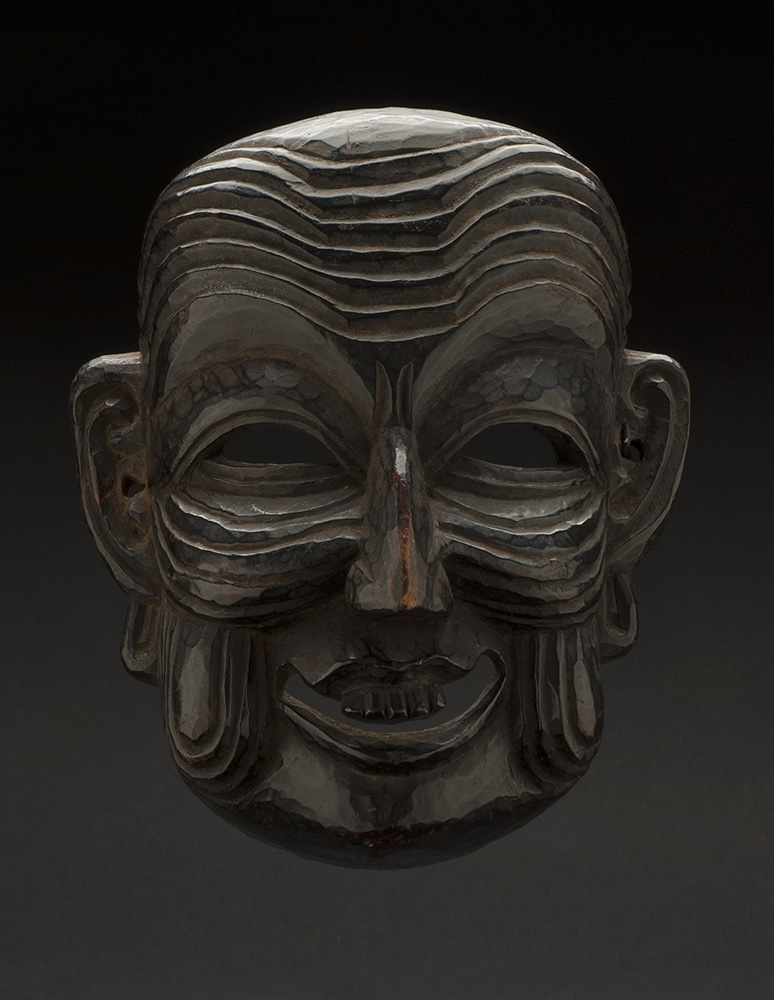




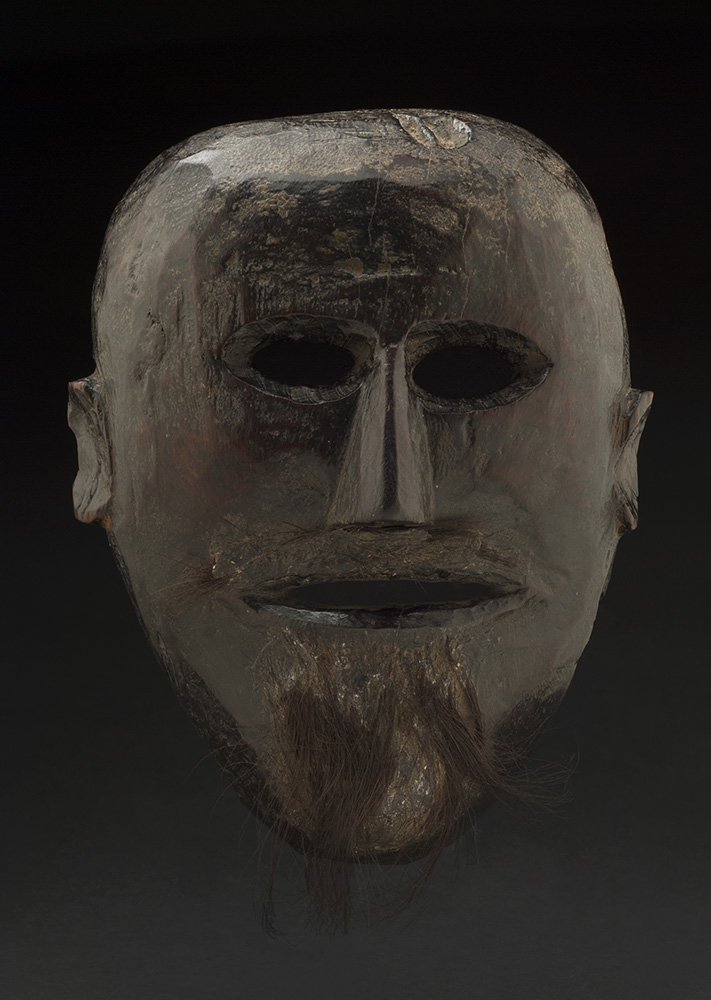





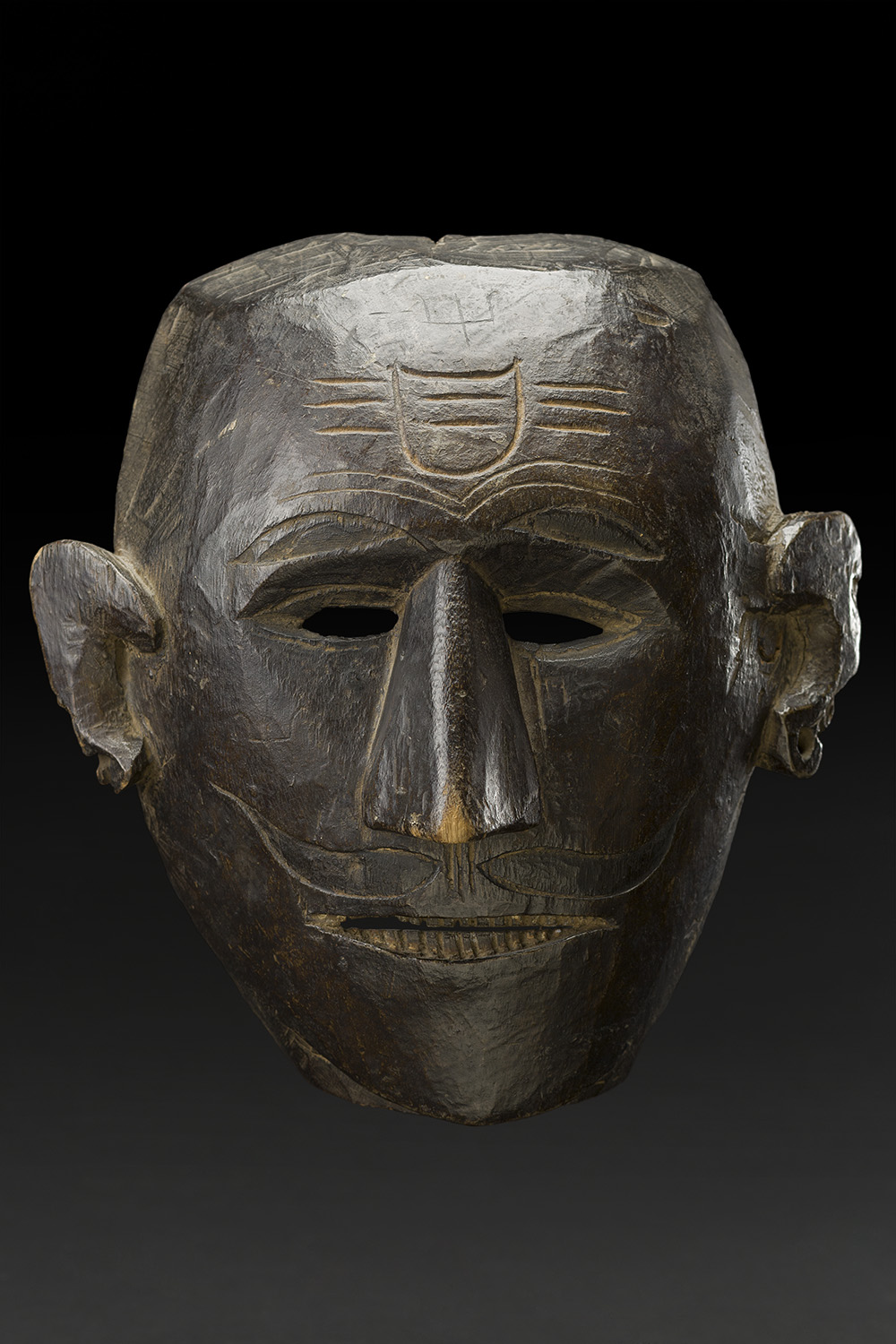












FACESHIFTING II: Animistic Masks from the Himalayas
(March 31 - May 7, 2016)
Cavin-Morris Gallery is pleased to celebrate this year’s Tribal Art Week in New York City with an exhibition of non-classical masks and sculptures from Nepal, India, and Bhutan called FACESHIFTING II: Animistic Masks from the Himalayas.
Our first Faceshifting exhibition in 2014 featured masks from all over the world. FACESHIFTING II focuses on a masking phenomenon that is under-documented (especially in English), yet is incredibly rich and varied. There is almost an art brut quality to the masks, as each is most often carved by the user creatively within very broad guidelines. The masks, although still actively danced today, have ancient origins in animist and shamanic traditions that were in place before Hindu and Buddhist beliefs became the ‘classic’ religions of the area. Unfortunately, scholars have paid more attention to the ‘classic’ masks than to these so-called ‘primitive’ examples.
The Himalayas have long been a site of mixed spiritualities. The animist sensibilities came from an intense relationship with the vagaries of Nature; the weather, agricultural cycles, health and disease etc. Each mask reads as a journal of this survival and the intensities of those beliefs; some are not danced but have an ancestral presence, hung in homes over doorways or placed by the hearth for amuletic purposes for home and family.
The characters are archetypal including sacred clowns or tricksters, wild men of the bush, goddesses, priests and demons, and wise old men. The masks are stark and often expressively powerful in their minimal charged lines, with deep patination of ash, and other sacrificial materials.
It has taken several years to bring together the pieces for this exhibition. We are pleased to present this rarely seen art form only now beginning to attract the recognition it deserves in this country.
For further information please contact Cavin-Morris Gallery at info@cavinmorris.com, or phone: 212-226-3768.
Lou Beach received Pollock-Krasner Grant
Cavin-Morris is pleased to announce that our artist Lou Beach is the recipient of the 2016 Pollock-Krasner Grant! Congratulations
ENTITIES: TOMÁŠ LAMPAR & JOSEFA ŠTEPÁNKOVÁ (March 31 - May 7, 2016)

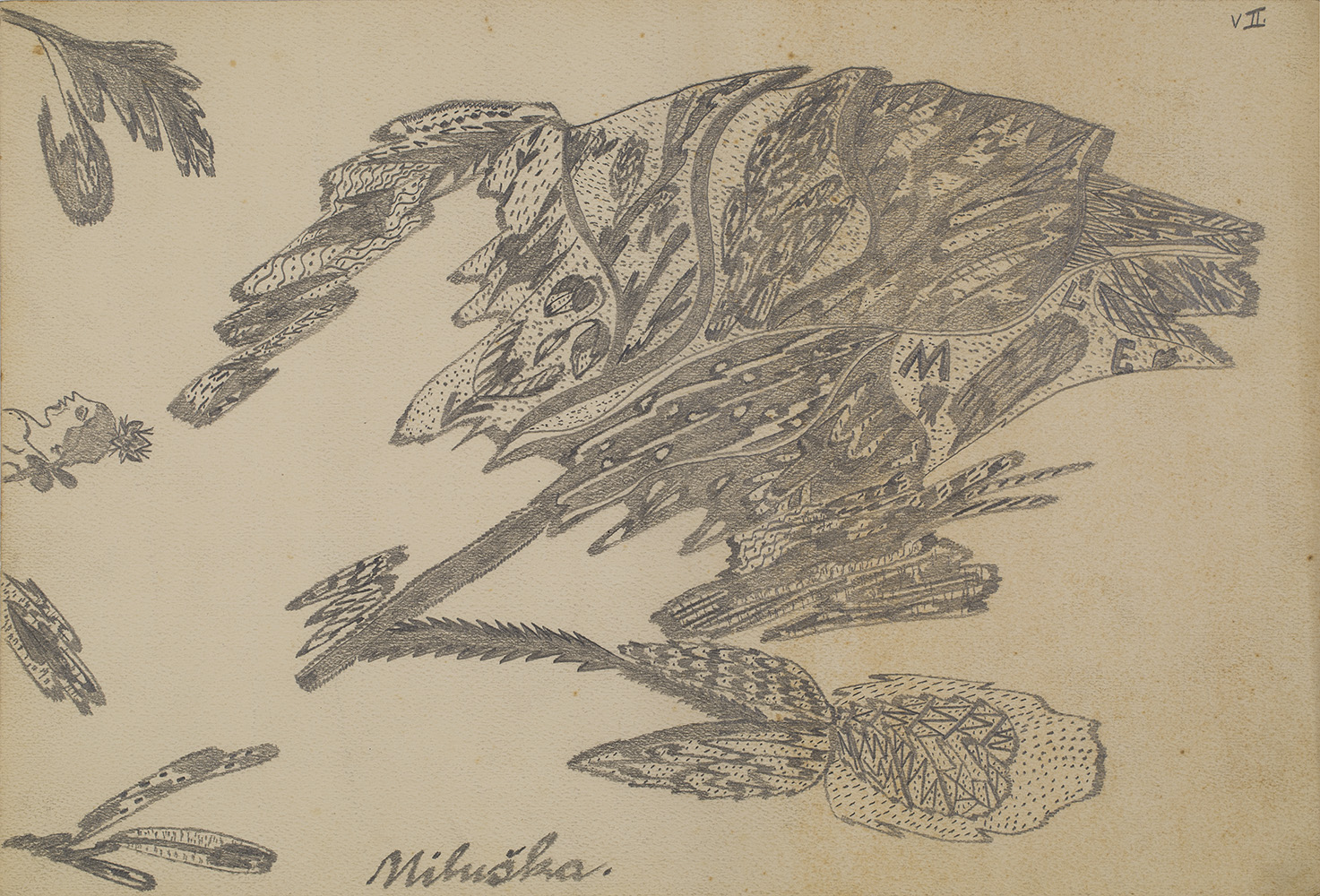






ENTITIES: TOMÁŠ LAMPAR & JOSEFA ŠTEPÁNKOVÁ
(March 31 - May 7, 2016)
Cavin-Morris Gallery is pleased to present the spiritualist and visionary work of architect Tomáš Lampar and his spiritualist great-grandmother Josefa Štěpánková.
Lampar's work comes from channeling entities from an undefined alternate state of reality or dimension. His great-grandmother’s work comes from the channeling of people she lost in the course of her life, especially family members with whom she spiritually connected. There is a floral presence in her work that was common to many of the Bohemian and Moravian spiritualists in the late 19th and early part of the 20th Century. Lampar's drawings also resonate with a botanical presence.
Here is what scholar Terezie Zemánková says about Lampar’s process in the catalog essay:
It is the principle behind this botanical vision, where the flower is both the form and the symbol, which Tomáš Lampar shares with his great grandmother Josefa Štepánková. They share the same hypersensitivity, and the ability of “flow-ness”: a power to connect with the entities beyond senses. Their motives for creation differ, however. While the works of Lampar are almost independent from his personal and professional life, the spiritual drawings of Josefa Štepánková reflect her dramatic personal history.
The two different approaches to visionary and spiritualistic imagery make this exhibition compelling. Lampar's work is wild, like unexplained light phenomena in a night sky. His drawings constantly reinvent color in unexpected ways that only accidentally refer to Wassily Kandinsky and Annie Besant. His process involves pulling new variations on what can be done with the innate qualities of the chalks, crayons, pastels and watercolors he uses. Everything he draws is germane to these cross-dimensional entities. Štěpánková's work is more in the language of her culture.
Josefa Štepánková often placed small portraits of her deceased ones into her drawings, or images of their spiritual, amorphous bodies. The faces grow directly from flowers, which sometimes contain messages, declarations or legacies of a religious nature. The leaves and petals are finished with simple details, in keeping with the aesthetics of the 1920s (ornaments of folk art, art deco or echoes of art nouveau).
In the end their messages meet in space, joined by art, fulfilling the function of a vehicle that allows communication between non-material modes of existence -- healing is the hoped for outcome. In doing so each invents a personal yet universal language we can still understand.
We will publish an online catalog with an essay by art historian Terezie Zemánková
For further information please contact Cavin-Morris Gallery at info@cavinmorris.com, or phone: 212-226-3768.
Click here to view the online catalog for MAVERICK
Gallery Walk-through with Curator Randall Morris
Maverick (February 18 - March 26)
Wooden Ships in Chelsea: Kevin Sampson’s Unique Art Form
Click here to read the article:
Outsider Art Fair Preview: Discoveries, Surprises, and an Expanded Vision
Twilight Before Dawn: Anna Zemánková
Anna Zemánková, Untitled, 1970s, Pastel, ball point pen and embroidery on paper, 24.61 x 17.72 inches, 62.5 x 45 cm, AZe 589
Twilight Before Dawn: Anna Zemánková
January 7 – February 13, 2016
Opening reception: Thursday, January 7, 6-8pm
We are pleased to present Twilight Before Dawn: Anna Zemánková, an exhibition that illuminates a rarely seen aspect of her work from the Zemánková family’s personal collection. They have kindly agreed to release these for this show for a limited amount of time.
Czech artist Anna Zemánková (1908 – 1986) is one of the great artists of the 20th century and is seen as one of the great female artists in the Art Brut pantheon, along with Jeanne Tripier, Madge Gill, Aloise Corbaz, and Emma Kuntz. Her works were prominently displayed in The Encyclopedic Palace at the 2013 Venice biennale curated by Massimiliano Gioni, at Frieze Masters that same year, and in many other important museum exhibitions. Her work is in the public collections of the Milwaukee Art Museum, WI; American Folk Art Museum, New York, NY; Museum of International Folk Art, Santa Fe, NM; Collection de l’art Brut, Lausanne, Switzerland; Arnulf Rainer Museum, Baden, Austria; and private collections including abcd collection, Paris, and The Museum of Everything, London, as well as other important private collections of contemporary art. Cavin-Morris Gallery has been representing her work worldwide since 1992.
Her granddaughter, Terezie Zemánková wrote
Her obsession with details overruled her entirely after some time. The tiny ornaments began to occupy more and more space. Perhaps she found in the automatic repetition of the complex ornaments the peace she was longing for. In this time, when she mastered the technique of drawing so well that she reached the ability to perfectly express the intended image and was able to carry it as far as the frontier of the yearned for perfection, she created a series of minute drawings, which resemble images created by some spiritualist psychics. This similarity is slightly apparent in all phases of Zemánková’s creations. In spite of the fact that she wasn’t inclined to the practices of spiritualism, she talked about a force that “led her”, when she--her mind in a creative trance--sat at her drawing table at dawn.
In the late sixties and thereafter Zemánková began to introduce other materials to her works in order to stretch the parameters. She crocheted fantastically intricate textiles and satin strips into the drawings, conscious always of their otherworldly interplay between oceanic and terrestrial forms. She was constantly reinventing Nature’s most sensual aspects.
We are proud to expose this masterful work to the American audience for the first time.
For further information please contact Cavin-Morris Gallery at info@cavinmorris.com, or phone: 212-226-3768.
Online catalog for Tantra, Anonymous, and Vyakul now available
Tantra, Anonymous, and Vyakul
Tantra, Anonymous, and Vyakul (December 3, 2015 - January 2, 2016)
TANTRA, ANONYMOUS, AND VYAKUL
DECEMBER 3, 2015 - JANUARY 2, 2016
Cavin-Morris is pleased to present an exhibition of tantric and tantrically influenced art works from India ranging from the sacred to the irreverent.
This exhibition presents the Tantra paintings of Acharya Vyakul (1930 – 2000, Jaipur and Rajasthan, India), several anonymous artists, and some contemporary miniaturists who wish to remain anonymous.
The creator of the small Yantra, or mystical diagrams was also trained as a copyist of traditional Indian miniatures. The artist chooses to remain anonymous in the spiritual act of making the paintings. The materials used include vintage paper, and hand-ground colors including minerals, mother-of-pearl, coral, tree resin mixed with metals, and vegetal pastes. These small paintings come from a tradition in Tantric Hinduism, which began in the fifth or sixth century C.E. After painting one, a devotee is to meditate on an image in order to manifest the divinity. It is a practice that involves a separation from one’s ego. In Sanskrit tantra means “loom” or “weave,” but also “treatise.” The hand-written Tantra treatises date back at least to the seventeenth century, as do the paintings. The Tantra treatises and paintings have been copied over many generations. The accompanying symbolic paintings evolved with the treatises. Now many of them have been separated from the original treatises.
The Tantric philosophy does not separate spiritual, ascetic practices from the mundane experiences of daily life. A Tantrika, or practitioner of Tantra, is not expected to live a hermetic existence away from the pleasure and pain of the world. The continuum of ordinary life can provide true and ever-lasting fulfillment only when all the threads are woven according to the pattern designated by Nature. When we are born, life naturally forms itself around that pattern. But as we grow, our ignorance, desire, attachment, fear, and false images of others and ourselves tangle and tear the threads, disfiguring the fabric. Tantra practice reweaves the fabric, and restores the grace of the original pattern.
Anonymous paintings such as these have been exhibited most recently at the Outsider Art Fair in New York; at the Venice Biennale in 2013; The Drawing Center, New York, in 2005-6; Feature Gallery, New York in 2012,
The next group of drawings is by Acharya Vyakul, who is known for his eccentric variations on traditional Tantric drawings. In the context of the tantric pictorial tradition, codified by unchanging archetypes, the work of Vyakul distinguishes itself by its freedom of execution, its aspect of free improvisation, a spontaneity fed by a secular tradition. Vyakul considered himself a modern painter working in the abstract tradition. Unlike 99.9 percent of painters of yantra, Vyakul signed his name. His paintings were brought to Western awareness by French poet Andre Jamme, who lent some to the groundbreaking exhibition, Magiciens de la Terre, organized by Jean-Hubert Martin, at Centre Georges Pompidou in 1989.
The third group are artists who have been given bookplates by two American friends and then choose which areas on the bookplates to paint in miniature style. These artists also wish to remain anonymous. The results are astonishing as they transform some iconic Western imagery through the visual expression of Indian culture. The results are less of a culture clash than culture fusion as can be seen in the famous photograph of Marilyn Monroe standing on the breezy grate. In this version, her white dress becomes a colorful textile decorated with Indian motifs, and the grate below her an elaborate Indian rug. All the other elements in the image have been left alone. The result is a complete retelling of a classic story.
For further information please call the gallery at 212-226-3768, or e-mail: info@cavinmorris.com.







